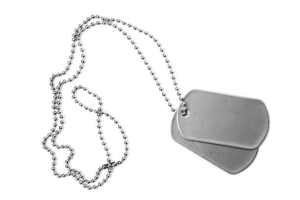Press Release | Nov. 15, 2024
Soldier Accounted For From World War II (Clark, W.)
WASHINGTON –
The Defense POW/MIA Accounting Agency (DPAA) announced today that U.S. Army Cpl. Walter L. Clark, 28, of Santa Rosa, California, who was captured and died as a prisoner of war during World War II, was accounted for August 27, 2024.
Clark’s family recently received their full briefing on his identification, therefore, additional details on his identification can be shared.
In late 1941, Clark was a member of 19th Quartermaster Truck Company, when Japanese forces invaded the Philippine Islands in December. Intense fighting continued until the surrender of the Bataan peninsula on April 9, 1942, and of Corregidor Island on May 6, 1942.
Thousands of U.S. and Filipino service members were captured and interned at POW camps. Clark was among those reported captured when U.S. forces in Bataan surrendered to the Japanese. They were subjected to the 65-mile Bataan Death March and then held at the Cabanatuan POW Camp #1. More than 2,500 POWs perished in this camp during the war.
According to prison camp and other historical records, Clark died Nov. 1, 1942, and was buried along with other deceased prisoners in the local Cabanatuan Camp Cemetery in Common Grave 704.
Following the war, American Graves Registration Service (AGRS) personnel exhumed those buried at the Cabanatuan cemetery and relocated the remains to a temporary U.S. military mausoleum near Manila. In 1947, the AGRS examined the remains in an attempt to identify them. Two of the sets of remains from Common Grave 704 were identified, while the remaining 8 were declared unidentifiable. The unidentified remains were buried at the Manila American Cemetery and Memorial (MACM) as Unknowns.
In 2018, as part of the Cabanatuan Project, DPAA exhumed the remains associated with Common Grave 704 and sent them to the DPAA laboratory for analysis.
To identify Clark’s remains, scientists from DPAA used dental and anthropological analysis, as well as circumstantial evidence. Additionally, scientists from the Armed Forces Medical Examiner System used mitochondrial DNA (mtDNA) and mitochondrial genome sequencing (mtG) analysis.
Although interred as an Unknown in MACM, Clark’s grave was meticulously cared for over the past 70 years by the American Battle Monuments Commission (ABMC). Today, Clark is memorialized on the Walls of the Missing at the Manila American Cemetery and Memorial in the Philippines. A rosette will be placed next to his name to indicate he has been accounted for.
Clark will be buried in Dixon, California, on a date to be determined.
For family and funeral information, contact the Army Casualty Office at (800) 892-2490.
